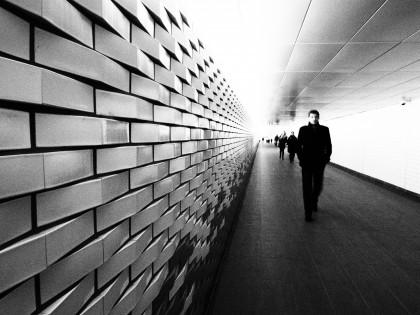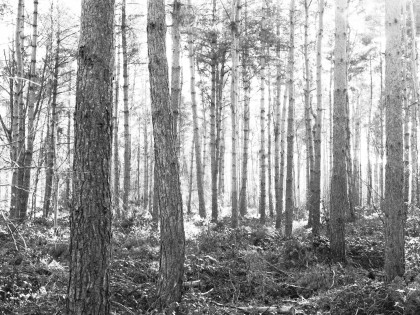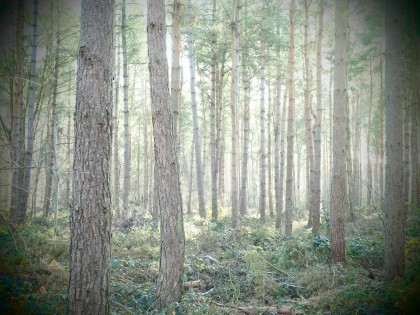Why you can trust TechRadar
Turning to the standard (16Mp) files, noise is controlled very well from ISO 100-6400, although some luminance noise is visible at 100% in images taken at the lowest sensitivity settings. Unusually JPEG files taken in the standard settings look very similar to raw files processed in the supplied Olympus Viewer software with all noise reduction turned off. Even at the highest sensitivity setting there's little in the way of chroma noise (coloured speckling) visible, but luminance noise is present at every value.

Click here for a full size version.

Click here for a full size version.
The results at ISO 6400 are pretty good, but stepping up to ISO 12,800 increases the level of smudging visible in images viewed at 100% and colour saturation drops. These images also look a little softer than ISO 200 shots when sized to make A3 prints, but are still passable. Using the maximum sensitivity setting, ISO 25,600, increases the level of smudging further, but the difference between these and ISO 12,800 images is hardly noticeable at A3.
As we have found before with Olympus mirrorless cameras, the E-M5 II's automatic white balance system does a very good job in most natural lighting situations. It also doesn't fare too badly in some artificial lighting situations, adding a hint of colour that gives away the light source.
As usual, colours are handled well in the Natural Picture mode, but there's a collection of other options such as Vivid, Muted, Portrait, Monotone and i-Enhance as well as the Custom and Color Creator options, if you're looking for a different treatment to be applied to the JPEG files. Helpfully, these options are available when shooting in High Res Shot mode and when shooting raw and JPEG files simultaneously.

Click here for a full size version.
Sign up for breaking news, reviews, opinion, top tech deals, and more.

Click here for a full size version.
While the Art Filter effects can be applied when shooting raw files as well as JPEGs, they cannot be used when shooting in High Res Shot mode.
Part of the beauty of the Olympus's Picture Styles and Art Filters is that the effects can be customised by selecting different styles or effects such as vignetting or frames. It's also possible to select the Art Filters that you like best and then bracket shots (ie produce a series of images at different settings with just one press of the shutter release). This means that as well as getting a 'clean' raw file for processing, you get a collection of JPEGs, each with one of your favourite Picture Style and Art Filter effects applied. You'll also get a JPEG with the currently selected Picture Style applied.



Although it doesn't have the hybrid AF system of the Olympus OM-D E-M1, the E-M5 Mark II's AF system is very good. In normal daylight conditions it gets subjects sharp quickly and while it struggled a little more than the Canon 5D Mark III I was using at the same time, I was able to get sharp images of a band playing in terrible lighting conditions. The M.Zuiko Digital ED 40-150mm f/2.8 Pro lens hunted around a bit in the gloomy lighting, but it was still able to latch on to the moving subjects in many instances and deliver decent results.
As I was shooting a moving subject the E-M5 Mark II's image stabilisation system wasn't able to help when shooting the band, but in other dark conditions it is very useful indeed. When shooting with the M Zuiko Digital 12-50mm f/3.5—6.3 EZ ED MSC kit lens at 14-17mm, which equates to 28-34mm in full-frame terms, I got consistently sharp results that stand scrutiny at 100% at 1/6sec. The majority of the shots that I took at 1/5sec are also sharp at 100%.

Click here for a full size version.
Video performance
Exposure and colour rendition is the same as for stills. Full-HD footage also has plenty of detail and low-light performance is good. Olympus hasn't offered any explanation for it, but the impact of the rolling shutter which often results in the well-known 'jello' effect with sloping or wobbling straight lines in footage with moving subjects or when the camera pans, is controlled well.
We also found that the stabilisation system makes considerable difference to video footage. Handheld footage looks much smoother and more steady when it's turned on, but as with other stabilisation systems (lens-based), if the videographer is moving and the stabilization is pushed to its maximum level of compensation, you're likely to see a brief sharp movement when the sensor reaches the end of its travel range. But if movements are kept smooth on steady-hands, the results are very impressive.
In summary, the stabilization won't allow you to produce completely smooth footage while walking, and good technique and practice in handling the cameras is still essential, but it has a significantly positive impact.
